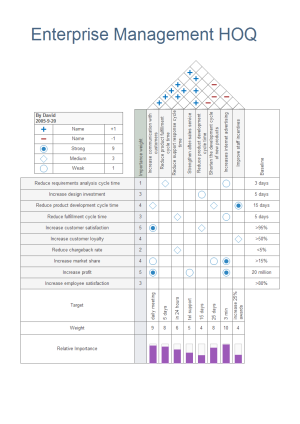Qfd Tutorial
Kano Model Tutorial Many “experts” insist that customers don’t really know what they want; they have to be told. They’re wrong, dead wrong! Customers do know what they want but may not be proficient at describing their needs. By understanding the three types of customer needs and how to reveal them, you’ll be well on your way to knowing customers’ needs as well as, or perhaps better than, they do.

QFD tutorial. QFD tutorial.
The Kano model is useful in gaining a thorough understanding of a customer’s needs. You can translate and transform the resulting verbatims using the that, subsequently, becomes an excellent input as the whats in a house of quality. The model involves two dimensions: • Achievement (the horizontal axis) which runs from the supplier didn’t do it at all to the supplier did it very well. • Satisfaction (the vertical axis) that goes from total dissatisfaction with the product or service to total satisfaction with the product or service. Noriaki Kano isolated and identified three levels of customer expectations: that is, what it takes to positively impact customer satisfaction. The figure below portrays the three levels of need: expected, normal, and exciting. Expected Needs Fully satisfying the customer at this level simply gets a supplier into the market.
Use the Kano model to transform the voice of the customer into inputs for QFD. Hip Hop Ejay 3 (street Style Ejay) [full] [pl].
The entry level expectations are the must level qualities, properties, or attributes. These expectations are also known as the dissatisfiers because by themselves they cannot fully satisfy a customer. However, failure to provide these basic expectations will cause dissatisfaction. Examples include attributes relative to safety, latest generation automotive components such as a self-starter, and the use of all new parts if a product is offered for sale as previously unused or new. The musts include customer assumptions, expected qualities, expected functions, and other unspoken expectations. Normal Needs These are the qualities, attributes, and characteristics that keep a supplier in the market. These next higher level expectations are known as the wants or the satisfiers because they are the ones that customers will specify as though from a list.
They can either satisfy or dissatisfy the customer depending on their presence or absence. The wants include voice of the customer requirements and other spoken expectations (see table below). Exciting Needs These are features and properties that make a supplier a leader in the market. The highest level of customer expectations, as described by Kano, is termed the wow level qualities, properties, or attributes. These expectations are also known as the delighters or exciters because they go well beyond anything the customer might imagine and ask for. Their absence does nothing to hurt a possible sale, but their presence improves the likelihood of purchase. Wows not only excite customers to make on-the-spot purchases but make them return for future purchases.
These are unspoken ways of knocking the customer’s socks off. Examples include heads-up display in a front windshield, forward- and rear-facing radars, and a 100,000 mile warranty. Over time, as demonstrated by the arrow going from top left to bottom right in the Kano model, wows become wants become musts, as in, for example, automobile self-starters and automatic transmissions. The organization that gets ahead and stays ahead constantly pulses its customers to identify the next wows. The best wows, plenty of wants, and all the musts are what it takes to become and remain an industry leader. The table below further clarifies the various types of customer requirements with respect to home buyers.